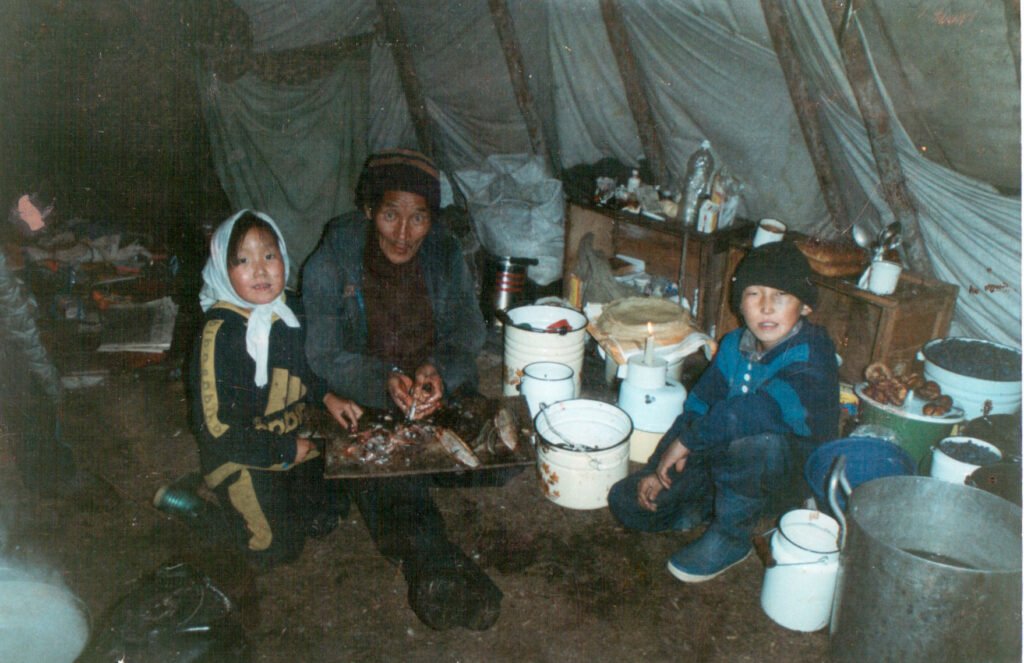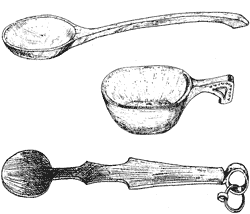Evenk language
The Evenk language belongs to the group of Tungus-Manchurian languages, which is divided by specialists into two subgroups: northern (Tungus) and southern (Manchurian). The northern subgroup includes languages: Evenk, Even, Negidal and Solonsky. The southern subgroup includes languages: Manchurian, Nanai, Ulchi, Udehei, Orochk and Ulta (Orok).
Throughout the long history of the Tungus, Evenk speech sounded in the vast territory of Siberia and the Far East. Today the Evenk language has survived in Russia only in places of compact residence in Evenkia, in the south of Yakutia, in the north of Buryatia, the Chita and Amur regions and the Khabarovsk Territory. Evenk is spoken by the Evenks, Solons and Orochons in the north and inner Mongolia of the PRC, as well as a small group in the north of Mongolia. The Evenk language is surprisingly adapted to life in the natural environment - accurate, but, at the same time, figurative and melodic. The functionality of the Evenk language is based on the specifics of the ancient culture of the nomads of the taiga expanses. In the Evenk language, one word can express the intention to set off in a certain direction relative to the river, mountain range and other landmarks. In the Evenk language, there are more than 20 names for snow, depending on its condition or meaning for hunting. Each of the biological species is assigned several names depending on the sex, age and other characteristics of the animal, as well as its place in the worldview of taiga hunters.
The lexicon of the Evenk language reflects traces of close ethnogenetic contacts with various tribes and peoples, mainly Turkic and Mongolian. In 1929, G.M. Vasilevich compiled the first Evenk primer Əwənkil dukuwuntin, where the Latinized alphabet was used:
| Aa | Bb | Чч | Dd | Ʒʒ | Ee | Əə | Gg | Hh | Ii | Jj | Kk |
| Ll | Mm | Nn | Ŋŋ | Oo | Pp | Rr | Ss | Tt | Uu | Ww | Yy |
In 1931, this alphabet was unified with other alphabets of the languages of the peoples of the North and took the following form:
| Aa | Bb | Cc | Dd | Ee | Əə | Ə̅ə̄ | Ff | Gg | Hh | Ii | Jj | Kk | Ll |
| Mm | Nn | Ņņ | Ŋŋ | Oo | Pp | Rr | Ss | Tt | Uu | Ww | Zz | Ʒʒ |
In 1937, like other alphabets of the peoples of the USSR, the Evenk alphabet was transferred to the Cyrillic base. At first it did not have additional letters, but in 1958 Ӈӈ was added and the alphabet took its modern form. The modern Evenk alphabet is based on the Cyrillic basis and includes 34 letters:
| Аа | Бб | Вв | Гг | Дд | Ее | Ёё | Жж | Зз | Ии | Йй | Кк | Лл | Мм | Нн | Ӈӈ | Оо |
| Пп | Рр | Сс | Тт | Уу | Фф | Хх | Цц | Чч | Шш | Щщ | Ъъ | Ыы | Ьь | Ээ | Юю | Яя |
In addition, diacritical marks are used to indicate long vowels in writing:
| А̅а̄ | Е̄е̄ | И̅ӣ | О̅о̄ | У̅ӯ | Э̅э̄ | Ю̅ю̄ | Я̅я̄ |
The Evenki language has a complex law of qualitative and quantitative vowel harmony. The language has a developed system of cases, specific and collateral forms of the verb and participles. In terms of grammatical structure, the Evenk language belongs to agglutinative languages, i.e. has no prepositions, prefixes or endings (for example, unlike the Russian language).
Все языковые построения в речи складываются при помощи суффиксов, которые следуют за корнем слова. Например: дю – дом, дюду – в доме (суффикс «ду» заменяет предлог «в»); дюла – домой; дютки – к дому и т.д. В эвенкийском языке суффиксы многочисленны, разнообразны и должны присоединяться к корню в определенном порядке: в первую очередь при склонении слова при необходимости присоединяется суффикс множественного числа, а за ним другие (падежные и др.). Например: Мы подошли к домам. – Бу дюлдула дагамарав («дю» – корень, «л» – суффикс множественного числа – «дула» – падежный суффикс); Мы подошли к их домам – Бу дюлдулатын дагамарав («дю» – корень, «л» – суффикс множественного числа, «дула» – падежный суффикс, «тын» – лично-притяжательный суффикс).
Суффиксы бывают словообразовательные (образуют новые слова) и словоизменительные (склоняют существительные и спрягают глаголы). В первую очередь к корню слова присоединяются словообразовательные суффиксы, за ними – словоизменительные. Например: Я увидел их шкуры диких оленей – Бэюксэлвэтын ичэм. (Бэюн – дикий олень, бэюксэ – шкура дикого оленя, где «ксэ» – словообразовательный суфф. – л-вэ-тын – словоизменительные суффиксы; Эвенки пошли к своим жилищам – Эвэнкил дюлдулавар нгэнэрэ. («дю» – корень, «л» – суффикс множественного числа, «дула» – падежный суффикс, «вар» – притяжательный суффикс множ. числа).
There are 13 cases in the Evenk language, and each has its own suffixes (except for the nominative case). In the modern Evenk language, in the conditions of a city and a village, 8-9 cases, close to the cases of the Russian language, can be dispensed with. Not all case names in the Evenk language coincide with the case names in Russian.
In the Evenk language, there is a strict order in a sentence - the subject (noun, pronoun) is in the first place, the verb is in the last, all other words in the sentence are located between the subject and the predicate. Example: I quickly went home - Bi dulavi himakandi ngenem (I am bi, himakandi - quickly, dulavi - home, went - ngenem); I quickly went home from my sister Lena - Bi Lena ekindukiv dyulavi himakandi ӈenem (I am bi, Lena ekindukiv - from my sister Lena, himakandi - quickly, dyulavi - home, went - enem).
The Evenk language is a true treasury of knowledge reflected in human speech and carried through many millennia of harmonious coexistence of man and nature.
Sources:
- Evengus.ru
- Konstantinova O.A., Evenk language, M.-L., 1964;
- Vasilevich G.M., The Evenk-Russian Dictionary (with a grammatical sketch), M., 1958.
Useful links:
- Portal dedicated to the Evenk language: http://evengus.ru
- Educational program "Evenk for beginners": https://yadi.sk/d/MzN9boZVJNVV2
- Evenk-Russian Dictionary by A.N. Myreeva: https://yadi.sk/d/HGXMGbkMJYzd5
- Mobile application "Russian-Evenk Dictionary": https://play.google.com/store/apps/details?id=com.rusdelphi.evdiclite.free
- Mobile application "Russian-Evenk Phrasebook": https://play.google.com/store/apps/details?id=com.rusdelphi.evphrasebook.free





